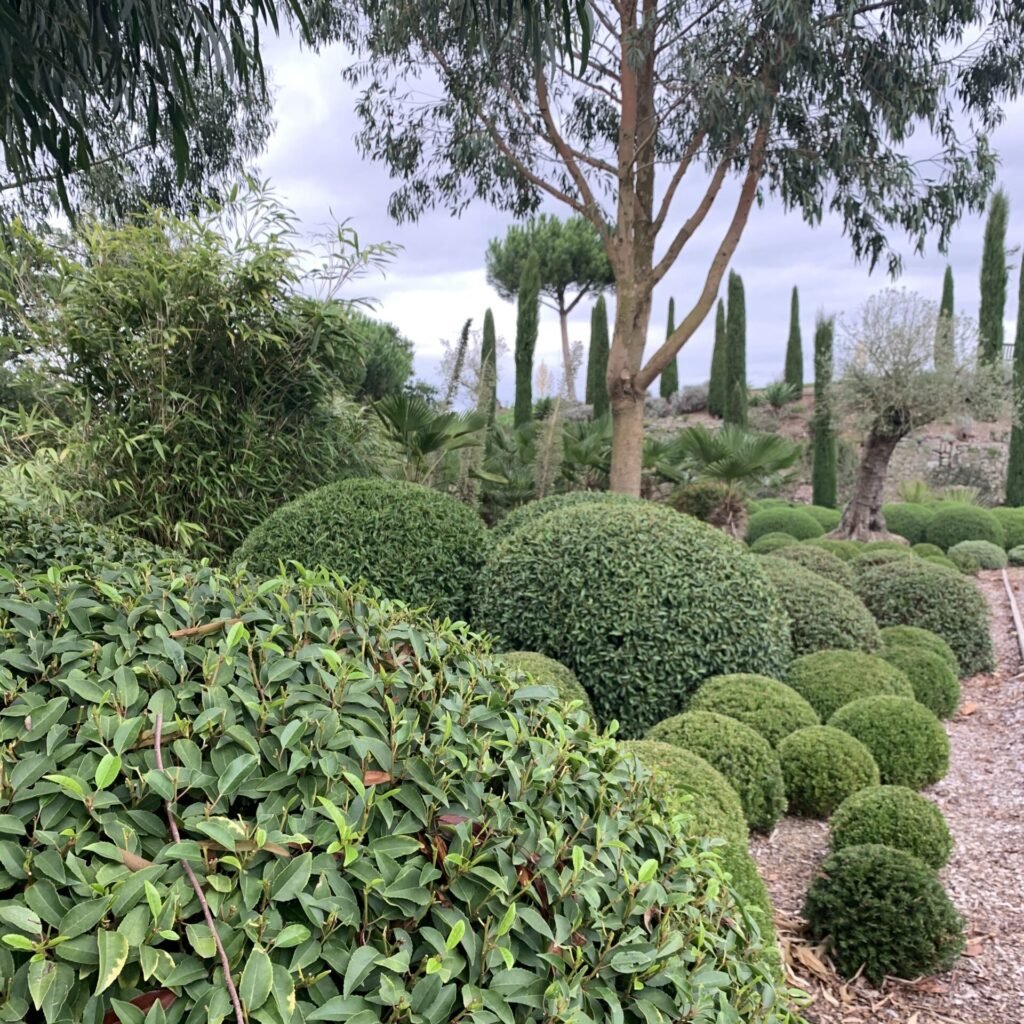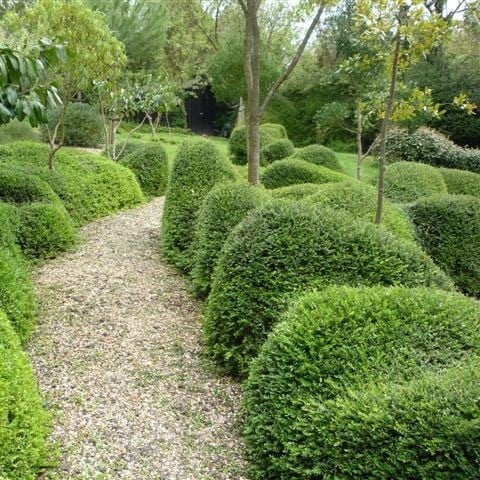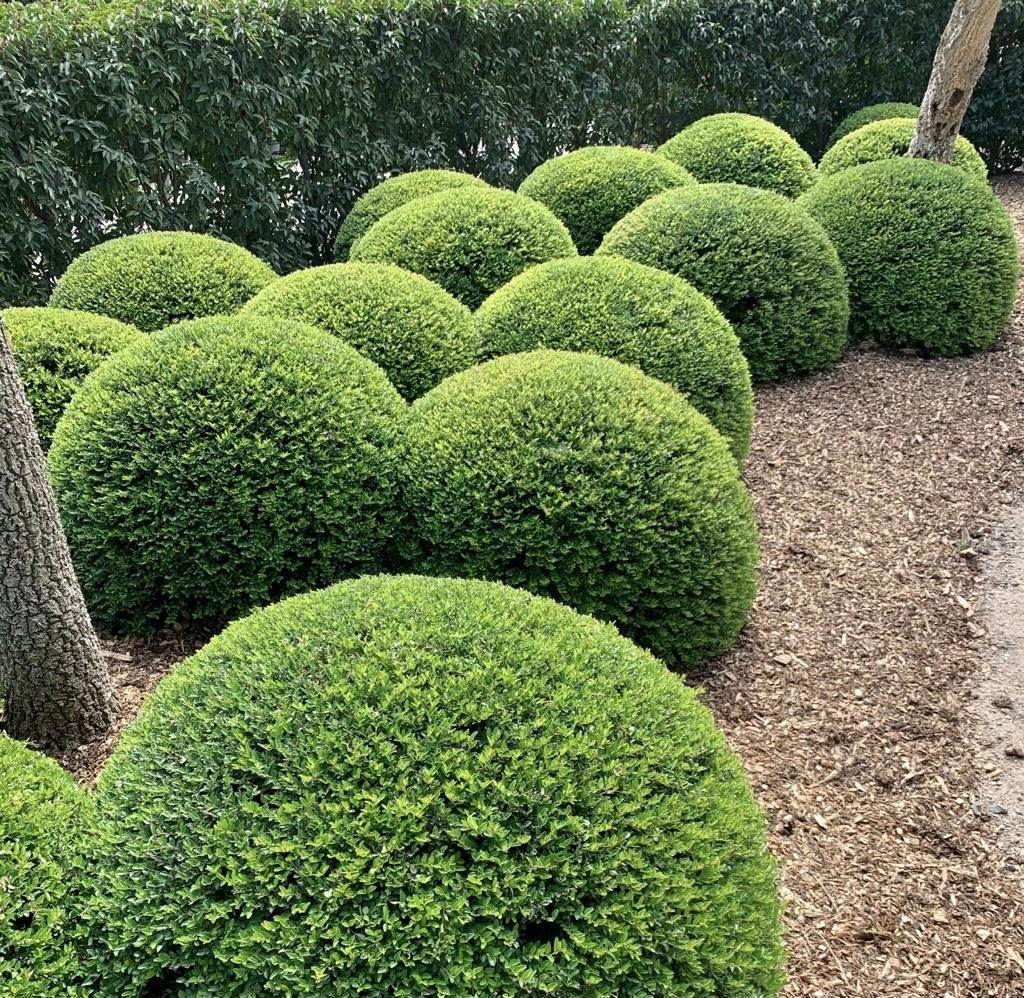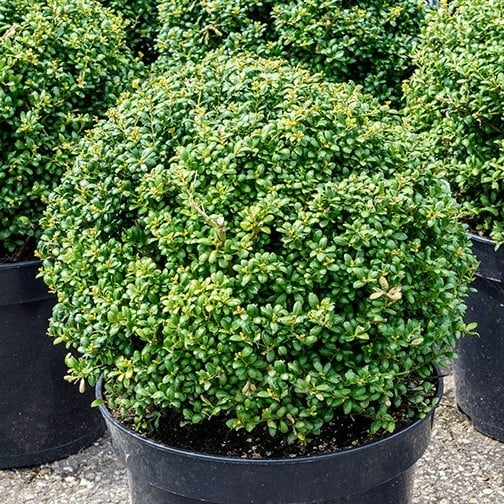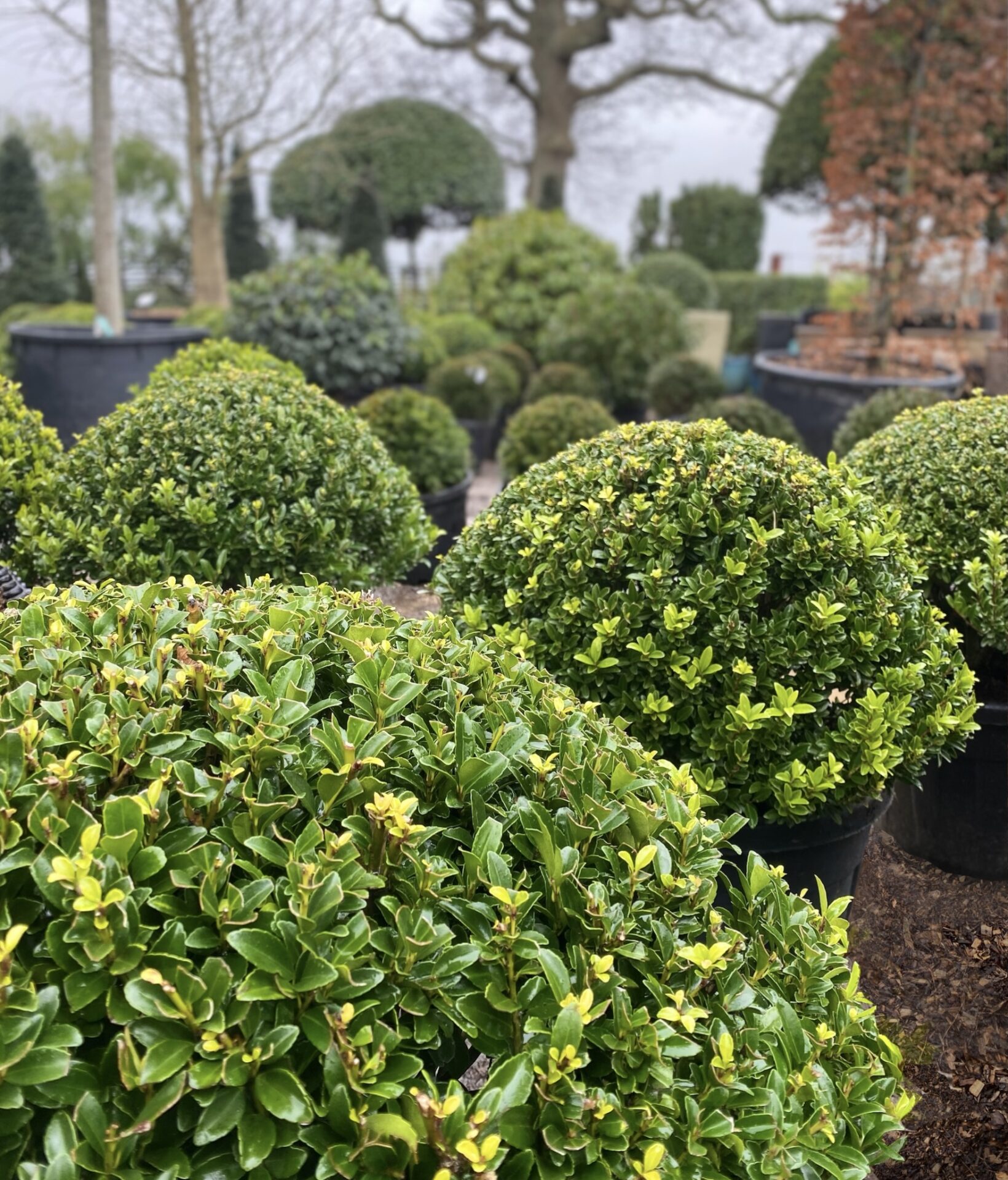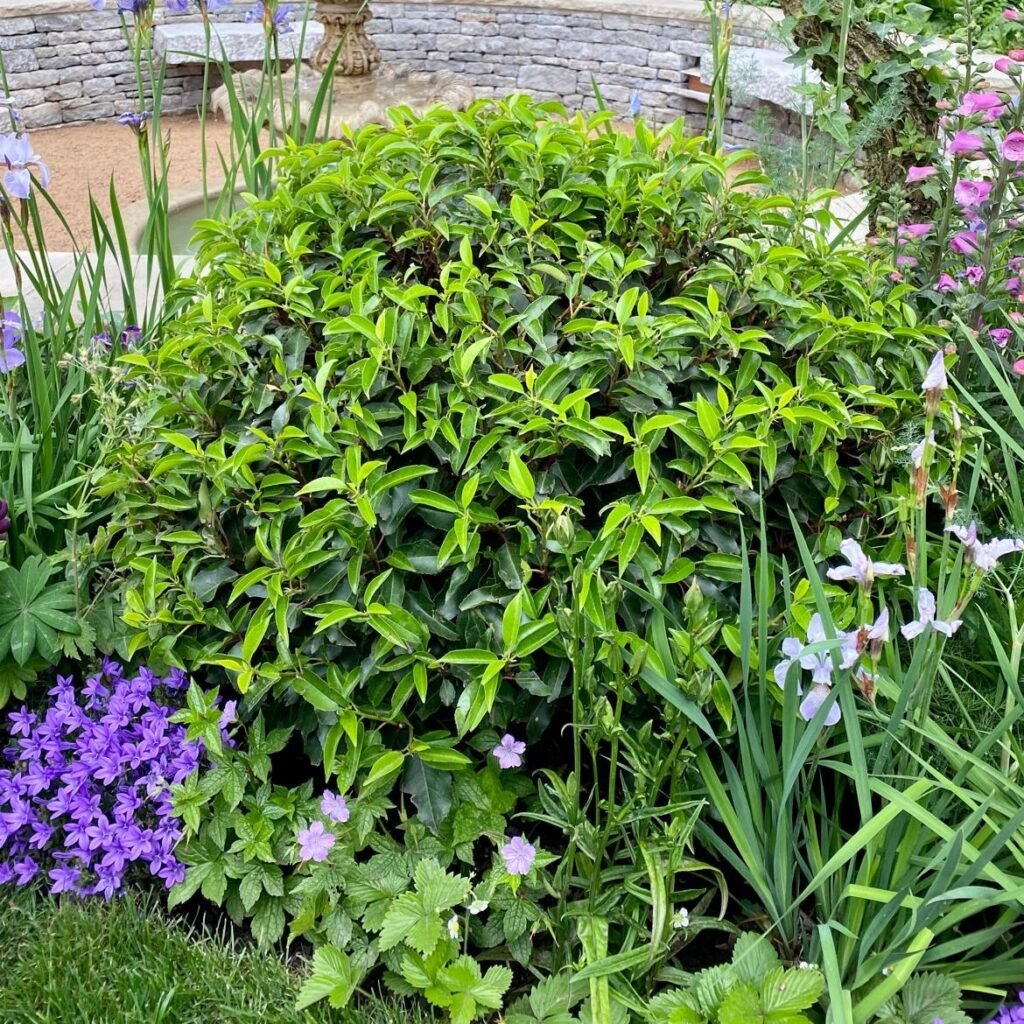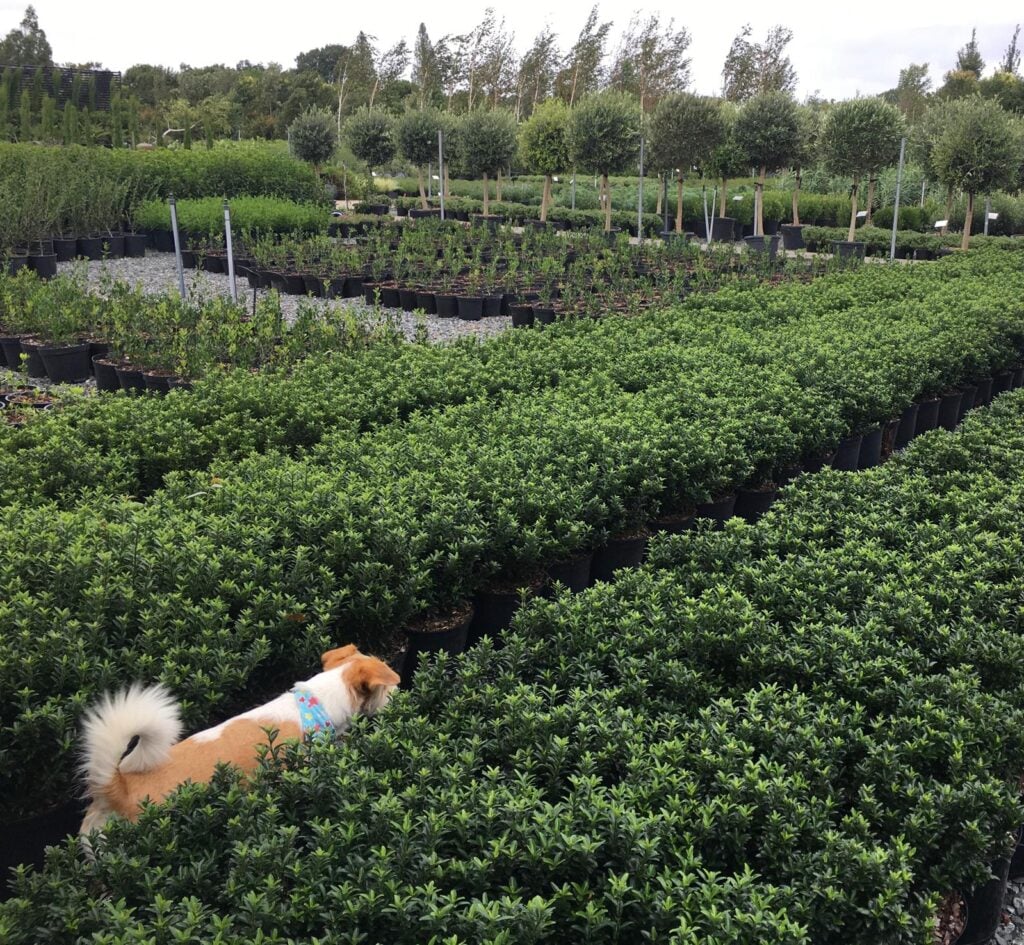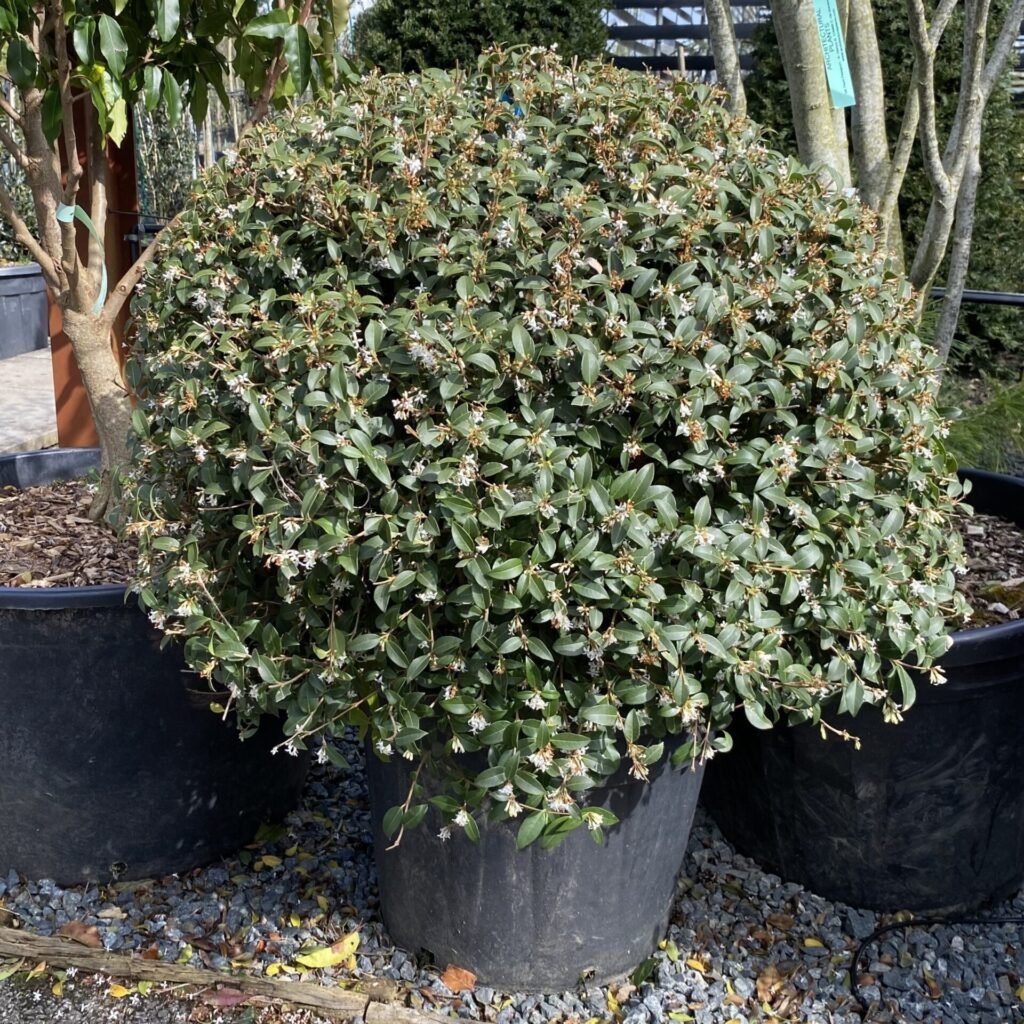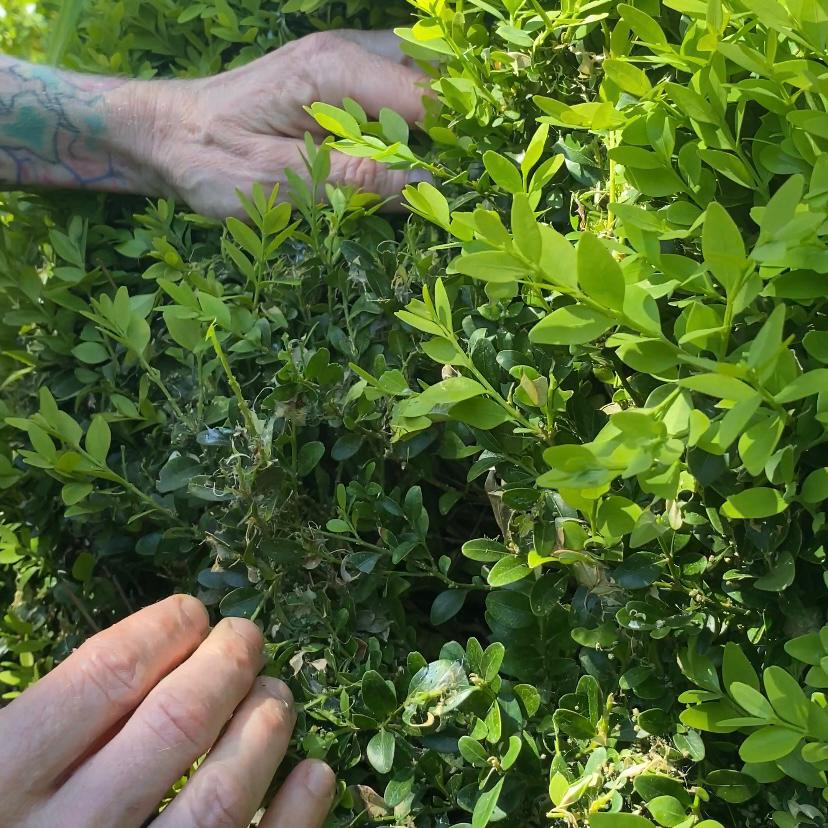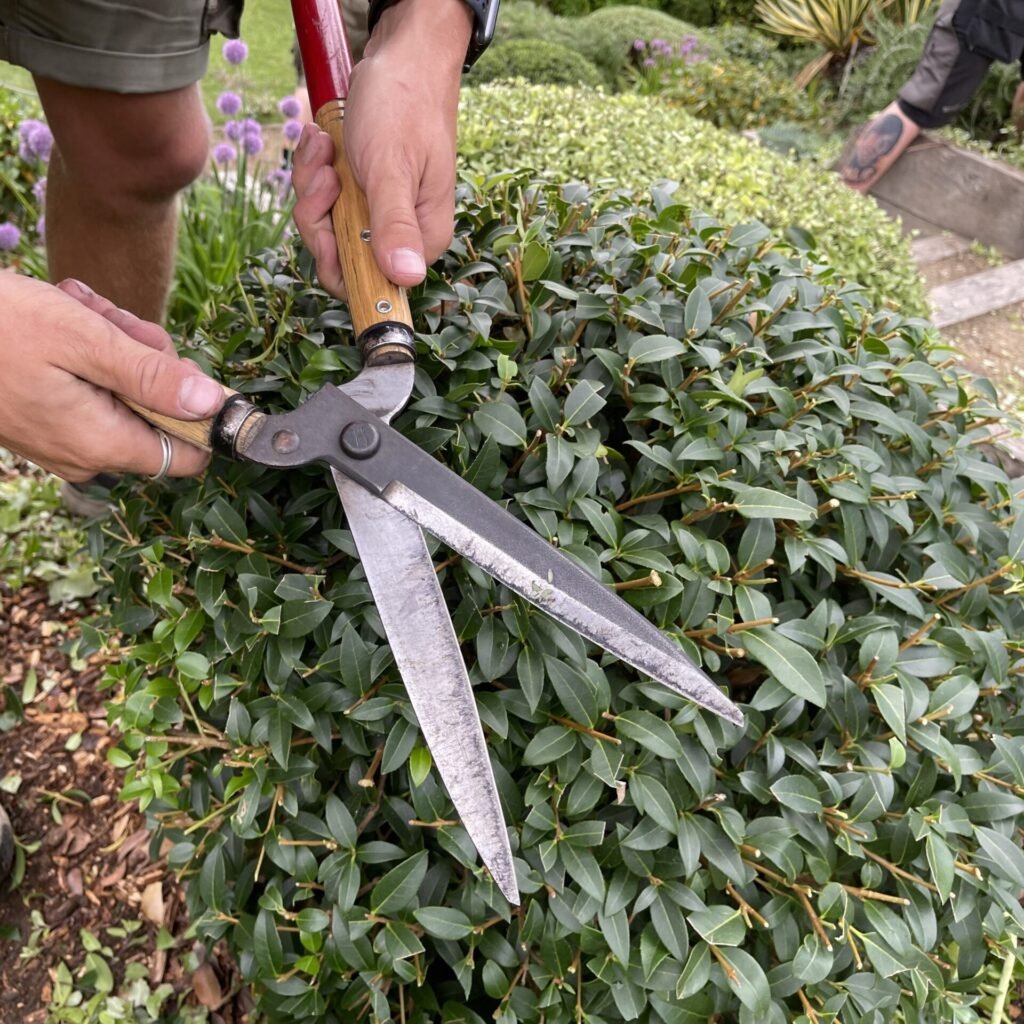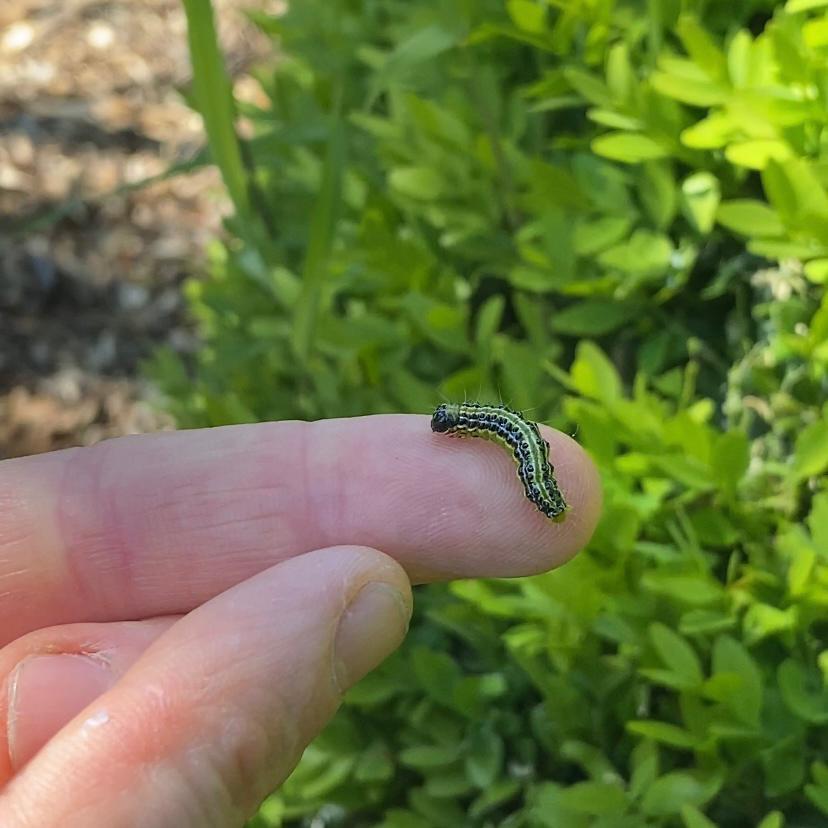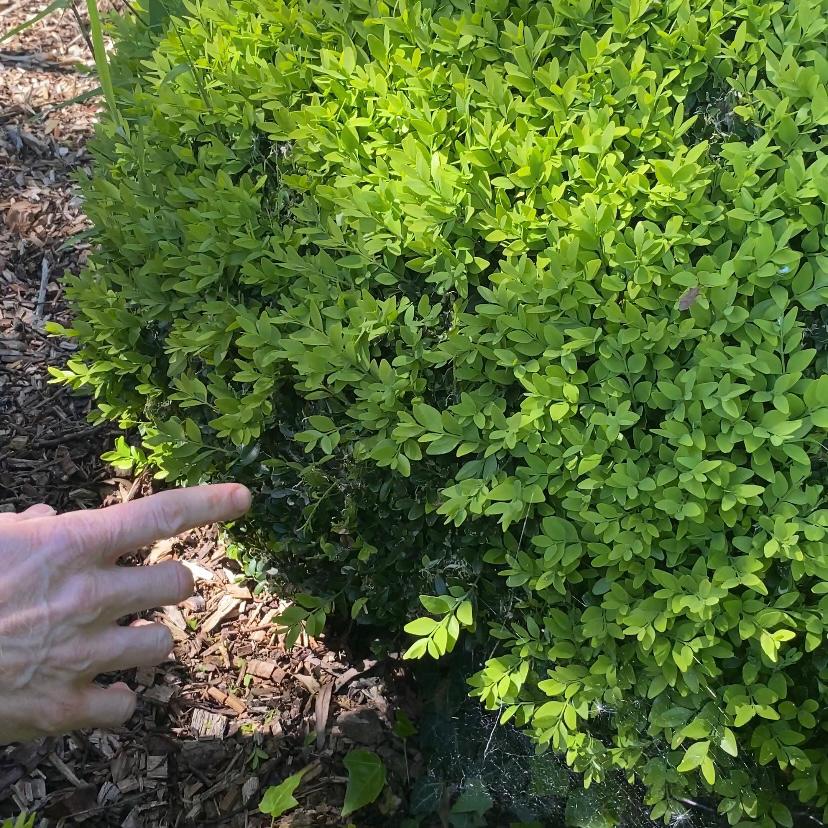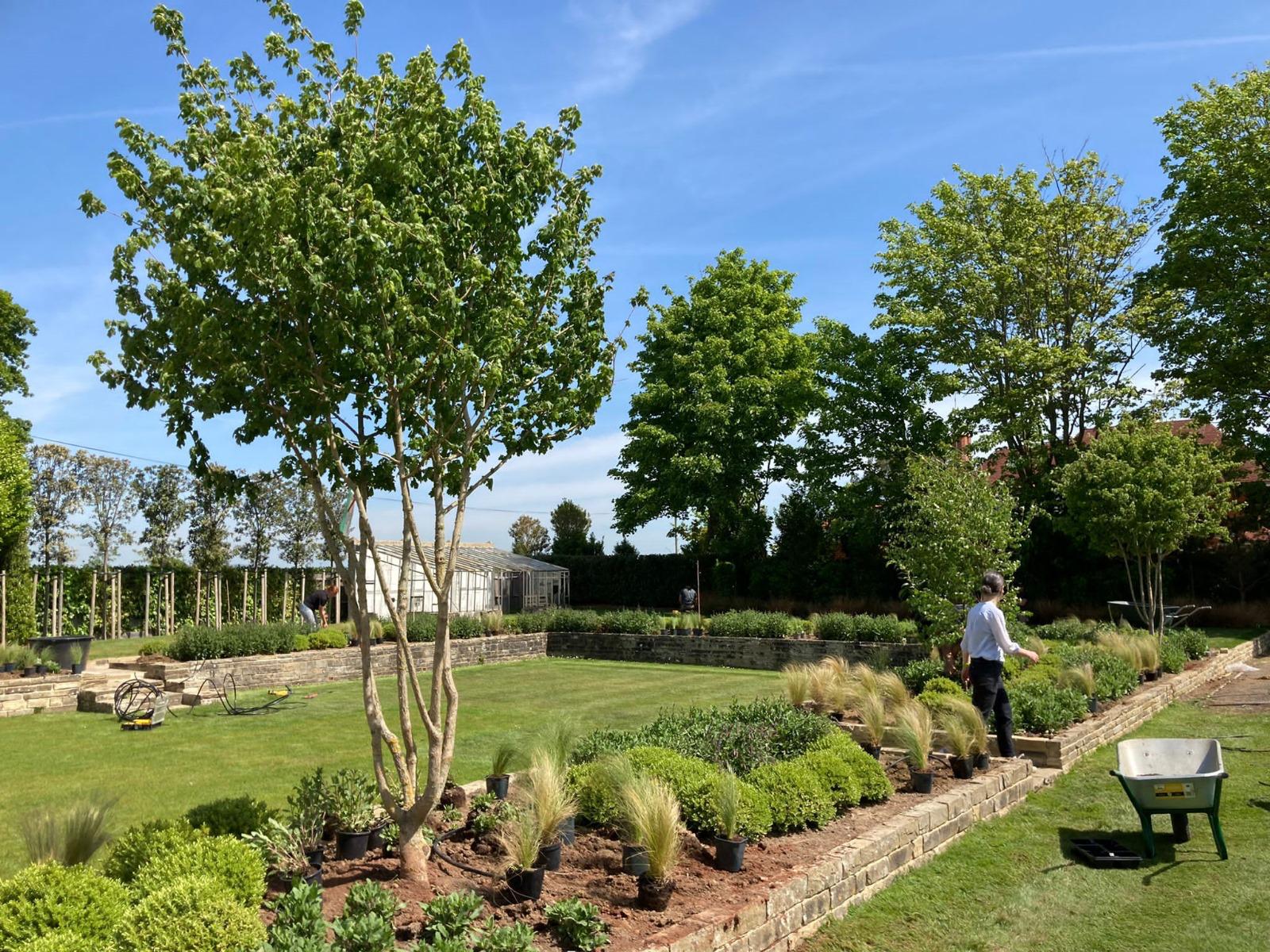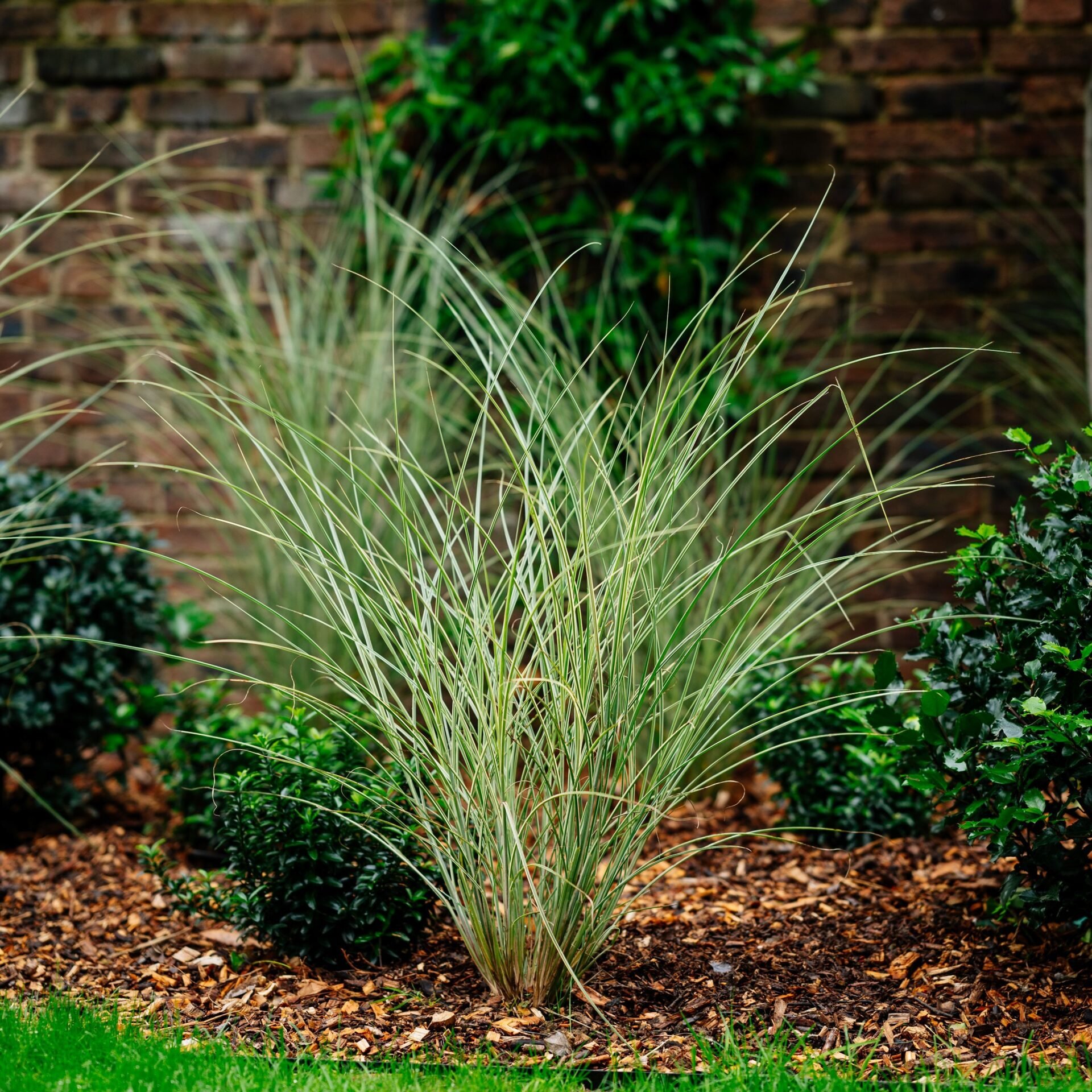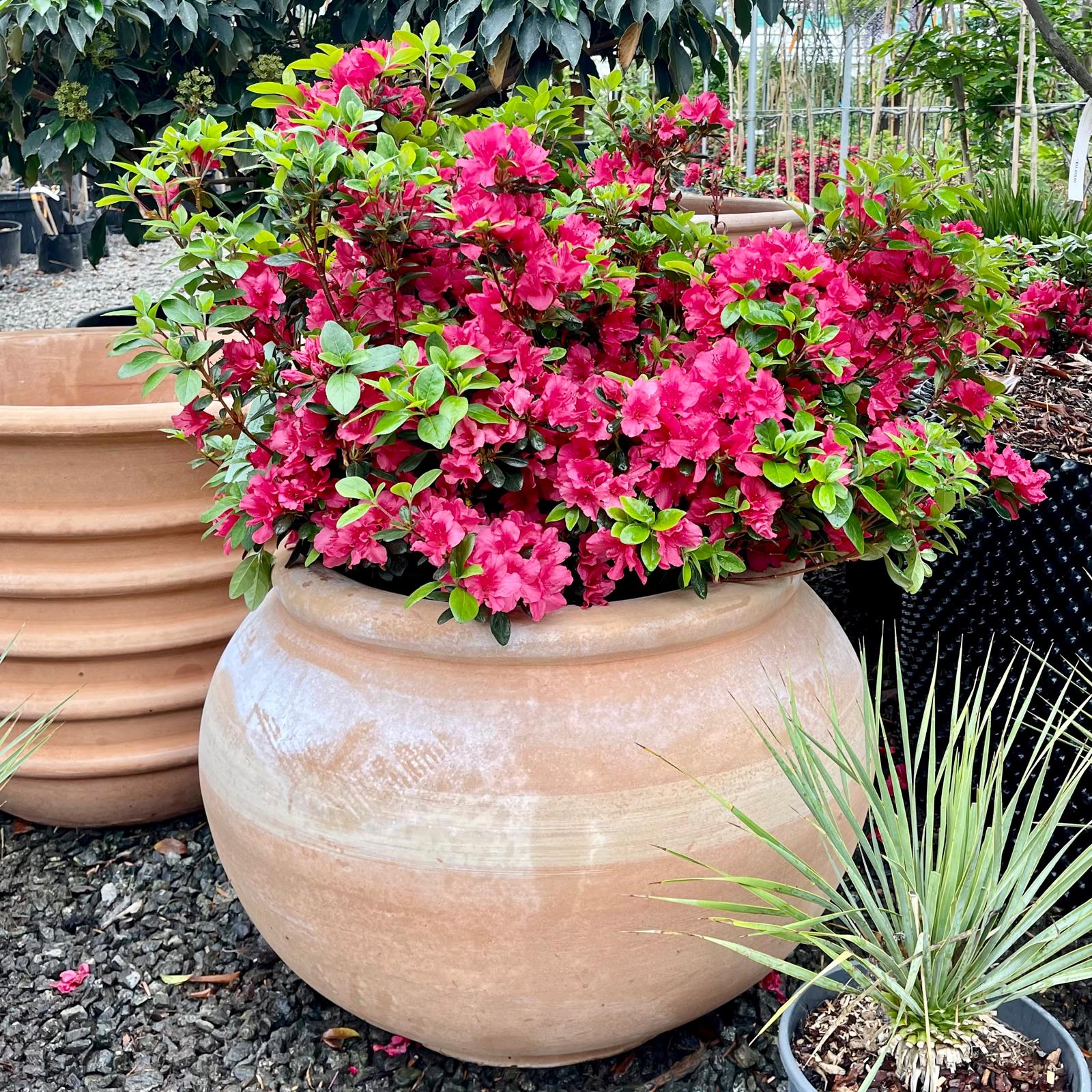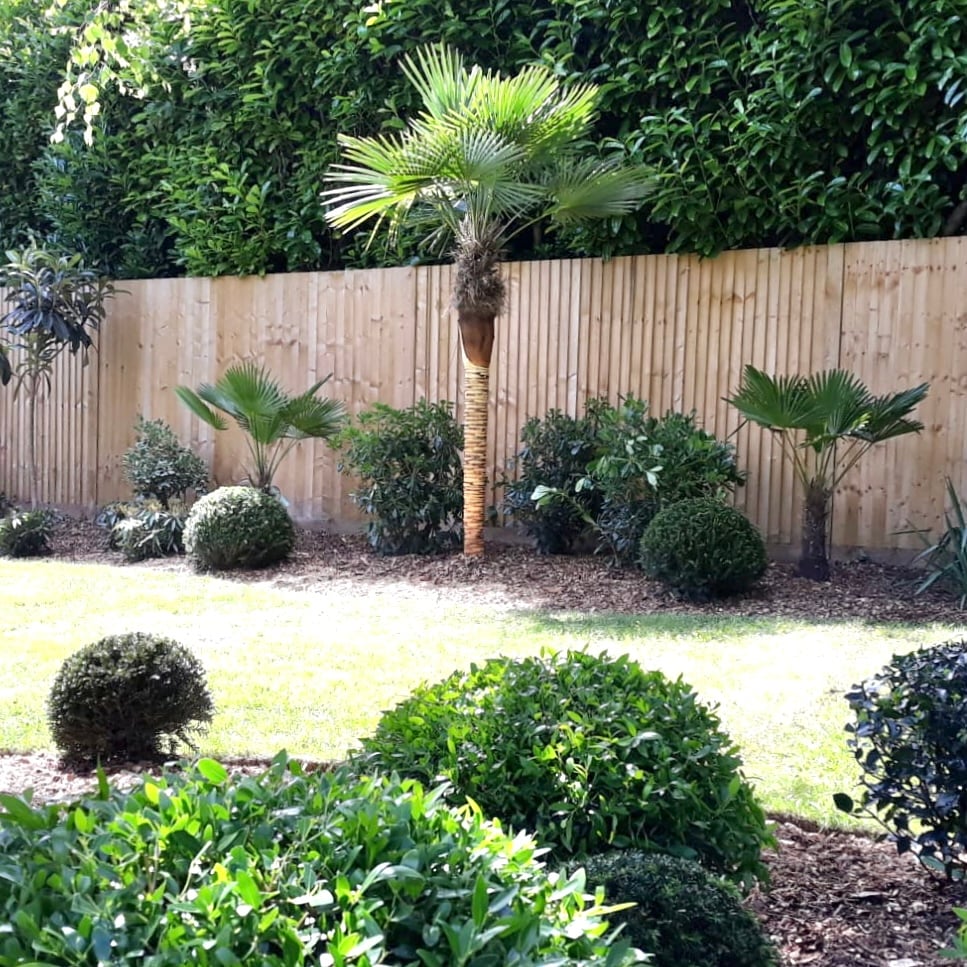Seven Shapely Box Alternatives
By Sarah Chandler
Your Box is dead, long live…what?
Once upon a time, Buxus sempervirens, aka Common Box grew wild from southern England to northern Morocco, and across from Portugal to Turkey. Gardeners discovered just how wonderful it was for formal designs, topiary, blobberies, hedges, mazes, balls, obelisks, peacocks… You name it, gardeners grew it.
It was central to so many designs for so many years, where would gardens be without it? Unfortunately, the answer is exactly and precisely where we are now. A combination of Box moth caterpillars, and Box blight has rendered the use of Buxus cultivars in gardens almost impossible.
Box blight has now been reported to affect plants all over Europe, Asia, New Zealand and North America. It is caused by a pair of fungi: Calonectria pseudonaviculata (aka Cylindrocadium buxicola) and Calonectria henricotiae.
SO WHAT NOW?
We stopped selling box in 2016 and have been trialling a range of alternatives since then, that we now use in our nursery estate gardens and in our customers’ Garden Designs. Choosing which ones are right for your garden will immediately throw up a number of questions: where is your garden, is it sunny or shady, wet or dry, exposed or sheltered? Is it a formal design, a cottage, classic or contemporary garden? What’s the drainage like? Was the Box used for a large or small hedge, a ball, a unicorn or a free form tree? How much time do you have, both to grow it and to maintain it? In general, proportion and perspective dictate that the larger the hedge/ball/blobbery/etc, the larger the leaf that can be used. Don’t panic! Contact us and we’ll help you find the right solution for your garden.
1. Lonicera nitida ‘Elegans’ (Shrubby Honeysuckle)
If you’re looking for rapid results, this fast growing alternative is worth considering. This is a small leaved shrub, originally from China where it grows along the streams and ditches of Yunnan and Sichuan provinces. Long since established as a firm favourite in gardens it has small rounded leaves. Often wider than tall this shrub can reach 1.5m to 1.8m tall with a fairly close habit so that when clipped, it can become very dense, thick and lush.
Once established it proves to be extremely robust. In the right conditions it’s quite unstoppable. It will grow from a small plant to a larger shape quite quickly but will then need very regular clipping to avoid looking shaggy and spikey. Should you ever need to cut back hard, healthy plants will return faithfully.
The flowers are small, creamy and appear in mid to late spring, but as with all topiary, the more the plant is pruned, the greater the chances that the flowers will be cut off.
2. Ilex crenata (Box Leaved Holly)
This is a group of small leaved shrubs from the far east that make really good subjects for topiary. Classic, slow growing Ilex crenata has been imported for a long time as Niwaki as it is perfect for the delicacy needed. An elegant, solid and sumptuous form.
3. ILEX MAXIMOWICZIANA ‘KANEHIRAE’
Recently we have been using Ilex maximowicziana balls, (fantastic name, but a bit of a mouthful, so usually known as ‘maxi balls.”) The leaves are a tad larger and it seems to be a bit faster growing and more robust than Ilex crenata.
4. Taxus baccata (Yew)
The ‘poshest’. From ancient times yew has thrived in this country. Hardy and evergreen it grows on hot dry hillsides and in shady churchyards. The flat, needle-like leaves are small and dense so the plant clips beautifully developing into lush, thick and long-lived topiary, hedges etc. A low maintenance choice that needs clipping just twice a year.
5. Prunus lusitanica myrtifolia (Portuguese Laurel)
Something a little looser. The leaves on this are mid-sized so it is an excellent choice for larger topiary. The foliage is considerably smaller than the species Prunus lusitanica, darker and the new shoots are a reddish colour. Spikes of small white flowers develop in the late spring and early summer, but these are often clipped off while the plant is being shaped. It is a pretty robust and tolerant plant, happy in most soils and conditions though as with any plant, will be more open structured in shadier positions.
6. Euonymus microphyllus
This is a perfect suggestion for those short hedges used to delineate and edge borders.
Even grown as a loose shrub, it will only reach maybe 100cms high. The leaves are small with slightly serrated edges and the new growth is a delightful bright green.
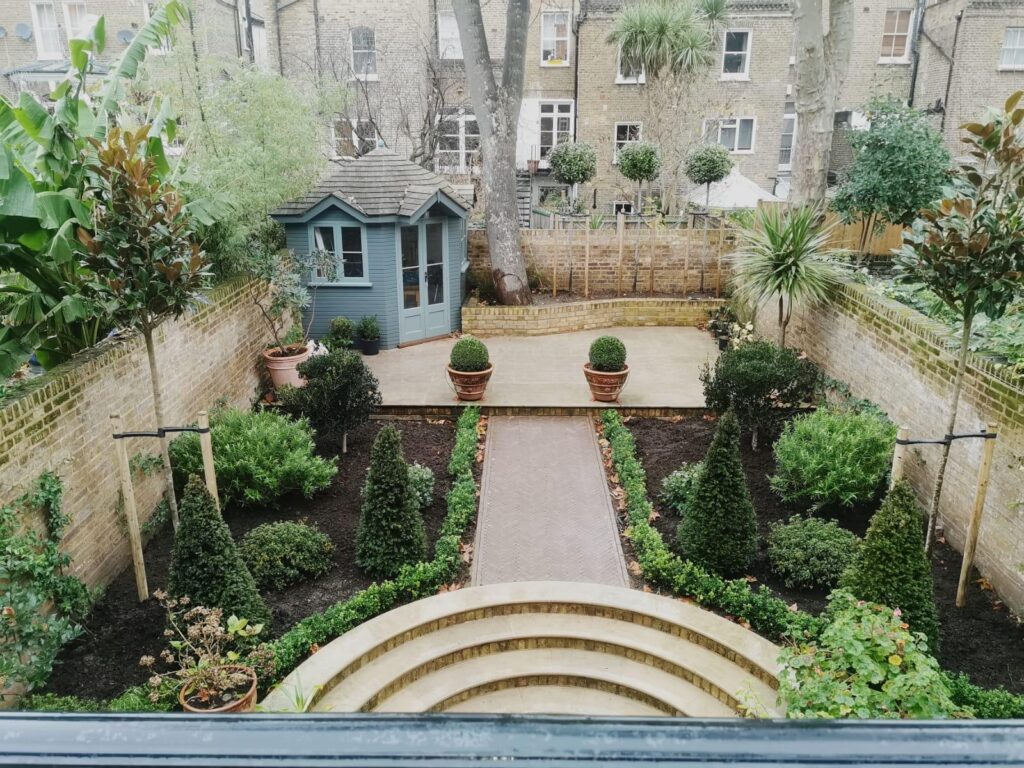
7. Osmanthus x Burkwoodii
A lovely little shrub, (well, untouched it could grow into a 6m tree,) but it clips really well; so perfect for a little multistemmed tree with a raised crown as a stand out feature or clipped into balls for one of our blobbery designs. The leaves are small, slightly leathery and dark and it has small delicate white scented flowers in the spring. They’re enchanting in contrast to the more coriaceous leafy foliage.
CASE NOTES: THE DEMISE OF BOX
What to look for
The leaves start looking sad, they start to yellow and fall off. A badly affected plant will unfortunately look just like a bunch of bald grey twigs. It is, as are so many things, made worse by stress, so the current periods of flood and drought, heat and cold haven’t helped.
If you intend to soldier on, then please note: large plants that are grown unclipped and unshaped are better able to weather attacks by pest or disease so Box can be used in the garden, but it will require taking a step back, considering the role of this plant in each individual design and being far more careful about the way it is treated and handled. This is probably not what you want to hear.
Caring for Box
A lot of this comes under the heading of good practice’ and will in fact be of benefit to all our plants. A small number of Box plants in a garden are easier to keep healthy, the greater the amount of box grown closely together in a garden, the greater the problem is likely to be. Fungus spreads by spores, and these spores transmit more easily in damp conditions. So be scrupulous in the cleaning of tools while clipping. Be assiduous in the clearing up of the clippings after cutting. Be careful to remove the bits left on, around, under and in the middle of the box plants. Try to only prune in periods of dry weather. When watering, water at the base of the plant, not on the foliage so as to prevent splashes that can cause the fungal spores to splash from one plant to another. Good husbandry will minimise the damage and the effects of the blight, but once established in a garden, it is difficult to eradicate totally.
A quote from our website is worth repeating here: Good hygiene, surgery and medicine, work. When clipping, always have a bucket of 5% bleach solution (household bleach or Milton solution will do) and dip the tool you’re using in the bucket, regularly and count to 5. The bleach will kill any spores on the tool and stop you spreading the disease. Clear up all clippings from the ground and burn them and any badly affected areas, cut out entirely. If this leaves an ugly hole (it will), it’s not half as ugly as having an expanding patch of dead plant and as nature abhors a vacuum, the plant will fill the hole with new growth before too long! Treating affected plants with fungicide will help. Unfortunately all the most effective fungicides have been banned because they’re dangerous.
BOX MOTH
Unbelievably, in addition to the blight, Buxus is now also suffering from the effects of box moth. Cydalima perspectalis arrived less than 20 years ago being first reported in Germany in 2006. Since when it has spread all over northern Europe.
Pheromone moth traps help. Fortnightly spraying with insecticides, insect-specific bacteria and nematodes can limit the development of the caterpillar or even picking off the caterpillars by hand. As there can be three or four generations annually, with the pupa overwintering in a cocoon, it is only the most determined gardeners who may succeed in keeping their plants healthy, but for the rest of us it’s an uphill battle.
The moth is native to the far east, where there are many other species of box, but it is not a large problem there because of natural predation which of course, does not occur in Europe. (Ironically, it is the Asian hornet which is devasting our honeybee population, that will predate the box moth too.)
However, we are an indomitable lot we gardeners, and once the inevitable has been recognised there are alternatives. So if you are looking for advice and guidance to help find a suitable box replacement, contact us below:
Or call / email us to discuss alternatives: 01798 879213 / enquiries@architecturalplants.com
Don’t despair, we’ll find you a solution.
Sarah C


